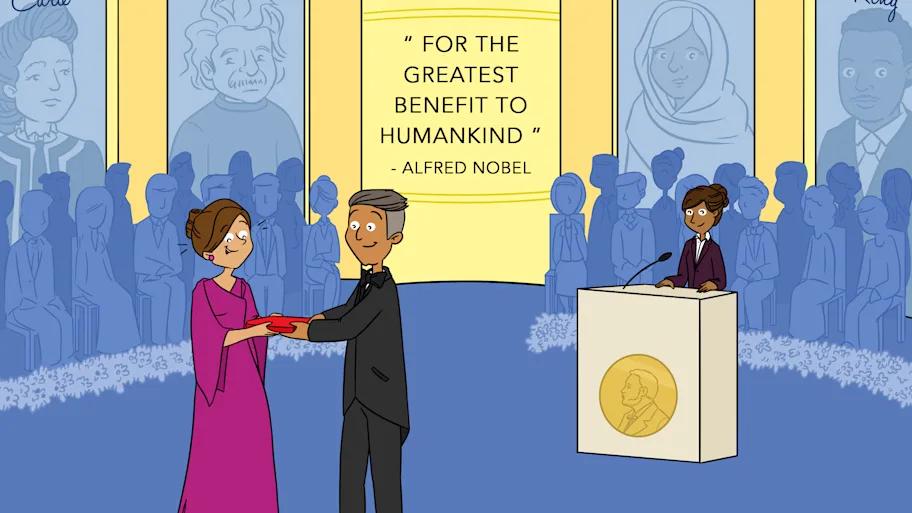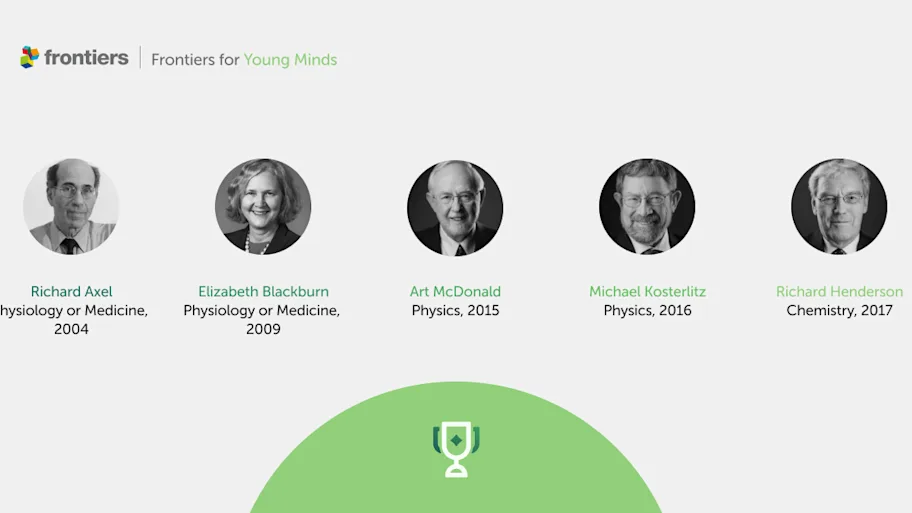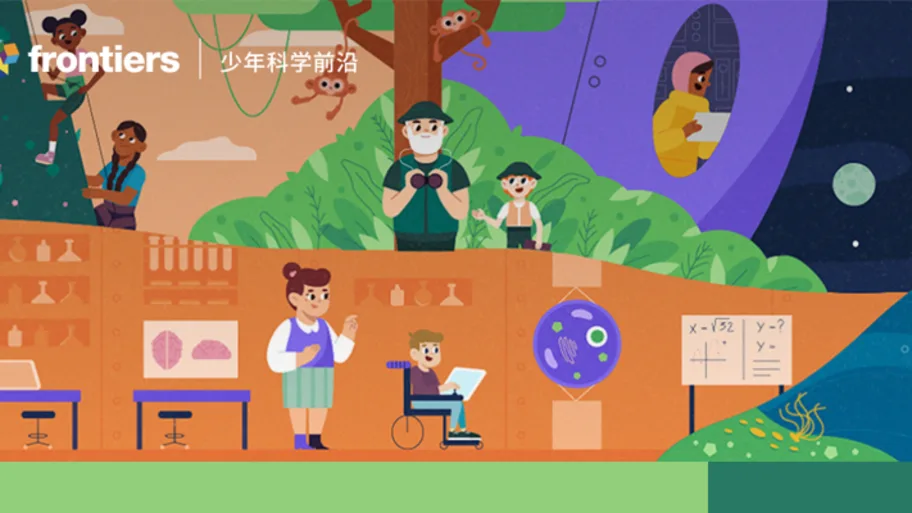
- Science News
- Featured news
- Nobel Prize winners inspire young minds in new scientific articles for kids
Nobel Prize winners inspire young minds in new scientific articles for kids
Frontiers for Young Minds launches third volume of Nobel Collection articles for young readers

Photo credit: Frontiers
Frontiers for Young Minds, an award-winning, non-profit, open-access scientific journal for kids, has released the third volume of its Nobel Collection today. The new volume features five articles on topics from using a glowing protein found in jellyfish to understand cell function to studying the smallest units of matter. Prior to publication, the distinguished scientists worked with young reviewers aged 8-15 to ensure their articles were interesting and understandable for young readers.
Launched in 2013, Frontiers for Young Minds inspires the next generation of scientists by making science accessible and engaging for young people. It provides reliable and up-to-date information on various topics in science, technology, engineering, mathematics, and medicine (STEMM). Through a unique review process, kids engage in dialogue with leading researchers worldwide, empowering the young reviewers with a better understanding not only of the science of the article, but of the scientific process and the importance of validating information. While learning about the world around them, young reviewers develop confidence, critical thinking, and communication skills.
The Nobel Collection is a special series of articles by Nobel Laureates. This third volume of the collection is an exciting new, educational installment for children and adults alike. The first and second volumes of the collection consist of 10 articles each, covering topics from discovering life on other planets to superfluids that defy gravity.
In this latest release, the scientists share their insights on the following topics:
The Quirky Lives of Quarks: A Close Look into Matter, written by David Gross, awarded the Nobel Prize in Physics in 2004. Atoms are small units of matter that create everything we see. Inside atoms there are subatomic particles such as protons and neutrons, which compose the nucleus of the atom. Protons and neutrons are themselves composed of even smaller units called quarks. David Gross discovered how these quarks interact, explaining why the attraction force between them gets weaker as they get closer together and stronger as they move further apart.
Molecular Flashlights that Light Up Science, written by Martin Chalfie, awarded the Nobel Prize in Chemistry in 2008. Green fluorescent protein (GPF) is a tiny glowing molecule that was originally found in glowing jellyfish. Martin Chalfie developed a way to use GFP as a marker that scientists can use to learn what is going on inside cells and organisms. Since his breakthrough, GFP was used in many different studies, helping scientists understand how cells work, how certain viruses cause diseases, and how proteins fold.
The Ribosome – The Factory for Protein Production According to the Genetic Code, written by Ada Yonath, awarded the Nobel Prize in Chemistry in 2009. Proteins are small biological machines that work in our bodies as well as in the bodies of all animals, plants, viruses, and bacteria. They are produced by a protein production ‘factory’ in cells called the ribosome. Ada Yonath developed a method for studying the structure and function of ribosomes. This method could be used to study how antibiotics work and improve them.
The Secrets of Secretion: Protein Transport in Cells, written by Randy Schekman, awarded the Nobel Prize in Physiology or Medicine in 2013. Cells release substances to the blood and to other cells via a process called secretion. For a substance to be secreted, it needs to travel between different stations within the cell and then cross the outer envelope of the cell called a membrane. This travel of a substance within and outside a cell is performed by small carriers called vesicles, which are like little cars that take a passenger substance to its destination. Randy Schekman identified different stations that this ‘car’ goes through within the cell, and significantly contributed to understanding the whole pathway of this fundamental process of secretion.
Seeing Beyond the Limits with Super-Resolution Microscopy, written by Eric Betzig, awarded the Nobel Prize in Chemistry in 2014. Scientists often want to look at very small objects in order to study them. For many years it was believed that we cannot look with visible light on objects that are smaller than a fundamental property of light called its wavelength (the distance between two peaks in the light wave). Eric Betzig was able to break that limit using a method based on glowing molecules that are attached to the object scientists want to study. This paved the way for scientists to look at objects they could never see before.
The third volume will expand with more Nobel Laureate authors later this year, providing young readers the opportunity to learn even more about important discoveries.
Commenting on the new volume, Frontiers for Young Minds head of program Laura Henderson says: “It’s wonderful to now have three volumes of our Nobel collection and so many Nobelist authors joining us to provide kids with access to their work. We want to ensure all science enthusiasts can read Nobel Prize-winning scientific concepts. With over 1.5 million reads and downloads of the articles in volumes one and two, I can’t wait to see volume three inspire our young readers even more.”
To find out more, watch this video:
Read the Nobel Collections here:
About Frontiers for Young Minds
Frontiers for Young Minds (FYM) is an award-winning, non-profit, open-access, scientific journal for kids that publishes articles written by leading researchers and peer reviewed by children aged 8-15. The journal features over 1,200 articles from 3,530 authors, achieving over 35 million views and downloads. Nearly 7000 young minds review the articles with the guidance of 800+ science mentors, from 65 countries worldwide. Frontiers for Young Minds publishes in eight subject areas (Astronomy and Physics, Biodiversity, Chemistry and Materials, Earth Sciences, Engineering and Technology, Human Health, Mathematics and Economics, Neuroscience and Psychology) with materials available in English, Hebrew, Arabic, and Chinese, with French launching in 2023. The Nobel initiative is part of Frontiers’ commitment to the United Nations Sustainable Development Goals and Goal 4 – Quality Education, in particular.
About Frontiers
Frontiers is the 3rd most-cited and 6th largest research publisher. We publish groundbreaking discoveries by the world’s top experts. Scientists empower society and our mission is to accelerate scientific discovery by making science open. We place the researcher at the center of everything we do and enable the research community to develop the solutions we need to live healthy lives on a healthy planet. Featuring custom-built technology, artificial intelligence, and rigorous quality standards, our research articles have been viewed more than 2.1 billion times, reflecting the power of research that is open for all.






